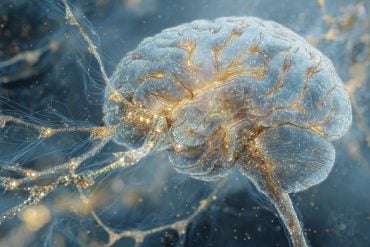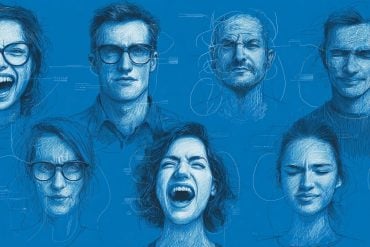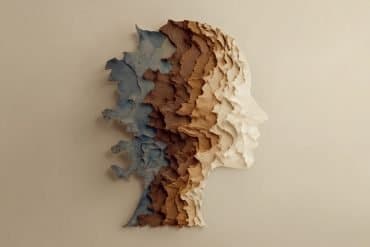Summary: A new AI-driven tool developed by researchers could revolutionize how educators and clinicians screen for dyslexia and dysgraphia in children. By analyzing handwriting samples from K–5 students, the system detects behavioral cues, spelling errors, motor difficulties, and cognitive issues with remarkable precision.
Unlike traditional screening, which is time-intensive and often condition-specific, this method is faster, scalable, and could ease the burden on the nation’s limited speech and occupational therapy workforce. The research underscores the value of using artificial intelligence for early intervention, particularly in underserved communities.
Key Facts:
- Multimodal Detection: The tool analyzes visual, motor, and cognitive elements of handwriting.
- Early Intervention: It identifies signs of both dyslexia and dysgraphia before major academic setbacks occur.
- Accessible Screening: Could help address workforce shortages in speech-language pathology and occupational therapy.
Source: University at Buffalo
A new University at Buffalo-led study outlines how artificial intelligence-powered handwriting analysis may serve as an early detection tool for dyslexia and dysgraphia among young children.
The work, presented in the journal SN Computer Science, aims to augment current screening tools which are effective but can be costly, time-consuming and focus on only one condition at a time.

It could eventually be a salve for the nationwide shortage of speech-language pathologists and occupational therapists, who each play a key role in diagnosing dyslexia and dysgraphia.
“Catching these neurodevelopmental disorders early is critically important to ensuring that children receive the help they need before it negatively impacts their learning and socio-emotional development.
“Our ultimate goal is to streamline and improve early screening for dyslexia and dysgraphia, and make these tools more widely available, especially in underserved areas,” says the study’s corresponding author Venu Govindaraju, PhD, SUNY Distinguished Professor in the Department of Computer Science and Engineering at UB.
The work is part of the National AI Institute for Exceptional Education, which is a UB-led research organization that develops AI systems that identify and assist young children with speech and language processing disorders.
Builds upon previous handwriting recognition work
Decades ago, Govindaraju and colleagues did groundbreaking work employing machine learning, natural language processing and other forms of AI to analyze handwriting, an advancement the U.S. Postal Service and other organizations still use to automate the sorting of mail.
The new study proposes similar a framework and methodologies to identify spelling issues, poor letter formation, writing organization problems and other indicators of dyslexia and dysgraphia.
It aims to build upon prior research, which has focused more on using AI to detect dysgraphia (the less common of the two conditions) because it causes physical differences that are easily observable in a child’s handwriting.
Dyslexia is more difficult to spot this way because it focuses more on reading and speech, though certain behaviors like spelling offers clues.
The study also notes there is a shortage of handwriting examples from children to train AI models with.
Collecting samples from K-5 students
To address these challenges, a team of UB computer scientists led by Govindaraju gathered insight from teachers, speech-language pathologists and occupational therapists to help ensure the AI models they’re developing are viable in the classroom and other settings.
“It is critically important to examine these issues, and build AI-enhanced tools, from the end users’ standpoint,” says study co-author Sahana Rangasrinivasan, a PhD student in UB’s Department of Computer Science and Engineering.
The team also partnered with study co-author Abbie Olszewski, PhD, associate professor in literacy studies at the University of Nevada, Reno, who co-developed the Dysgraphia and Dyslexia Behavioral Indicator Checklist (DDBIC) to identify symptoms overlapping between dyslexia and dysgraphia.
The team collected paper and tablet writing samples from kindergarten through 5th grade students at an elementary school in Reno. This part of the study was approved by an ethics board, and the data was anonymized to protect student privacy.
They will use this data to further validate the DDBIC tool, which focuses on 17 behavioral cues that occur before, during and after writing; train AI models to complete the DDBIC screening process; and compare how effective the models are compared to people administering the test.
Work emphasizes AI for public good
The study describes how the team’s models can be used to:
- Detect motor difficulties by analyzing writing speed, pressure and pen movements.
- Examine visual aspects of handwriting, including letter size and spacing.
- Convert handwriting to text, spotting misspellings, letter reversals and other errors.
- Identify deeper cognitive issues based on grammar, vocabulary and other factors.
Finally, it discusses a tool that combines all these models, summarizes their findings, and provides a comprehensive assessment.
“This work, which is ongoing, shows how AI can be used for the public good, providing tools and services to people who need it most,” says study co-author Sumi Suresh, PhD, a visiting scholar at UB.
Additional co-authors include Bharat Jayarman, PhD, director of the Amrita Institute of Advanced Research and professor emeritus in the UB Department of Computer Science and Engineering; and Srirangaraj Setlur, principal research scientist at the UB Center for Unified Biometrics and Sensors.
About this AI and dyslexia research news
Author: Cory Nealon
Source: University at Buffalo
Contact: Cory Nealon – University at Buffalo
Image: The image is credited to Neuroscience News
Original Research: Open access.
“AI-Enhanced Child Handwriting Analysis: A Framework for the Early Screening of Dyslexia and Dysgraphia” by Venu Govindaraju et al. SN Computer Science
Abstract
AI-Enhanced Child Handwriting Analysis: A Framework for the Early Screening of Dyslexia and Dysgraphia
Dyslexia and dysgraphia are two specific learning disabilities (SLDs) that are prevalent among children.
To minimize the negative impact these SLDs have on a child’s academic and social-emotional development, it is crucial to identify dyslexia and dysgraphia at an early age, enabling timely and effective intervention.
The first step in this process is screening, which helps determine if a child requires further instruction or a more in-depth assessment.
Current screening tools are expensive, require additional administration time beyond regular classroom activities, and are designed to screen exclusively for one condition, not for both dyslexia and dysgraphia, which often share some common behavioral characteristics. Most dyslexia screeners focus on speech and oral tasks and exclude writing activities.
However, analyzing children’s writing samples for behavioral signs of dyslexia and dysgraphia can offer valuable insights into the screening process, which can be time-consuming.
As a solution, we propose a co-designed framework for building artificial intelligence (AI) tools that could boost the efficiency of screening and aid practitioners such as speech-language pathologists (SLPs), occupational therapists, general educators, and special educators by simplifying their tasks.
This paper reviews current screening methods employed by practitioners, the use of AI-based systems in identifying dyslexia and dysgraphia, and the handwriting datasets available to train such systems.
The paper also outlines a framework for developing an AI-integrated screening tool that can identify writing-based behavioral indicators of dyslexia and dysgraphia in children’s handwriting.
This framework can be used in conjunction with current screening tools like the Dysgraphia and Dyslexia Behavioral Indicator Checklist (DDBIC). The paper also proposes a methodology for collecting children’s offline and online handwriting samples to build a valuable dataset for developing AI solutions.
The proposed framework and data collection methodology are co-designed with SLPs, occupational therapists (OTs), special educators, and general educators to ensure the tool can provide explainable, actionable information that would be invaluable in a practical setting.






